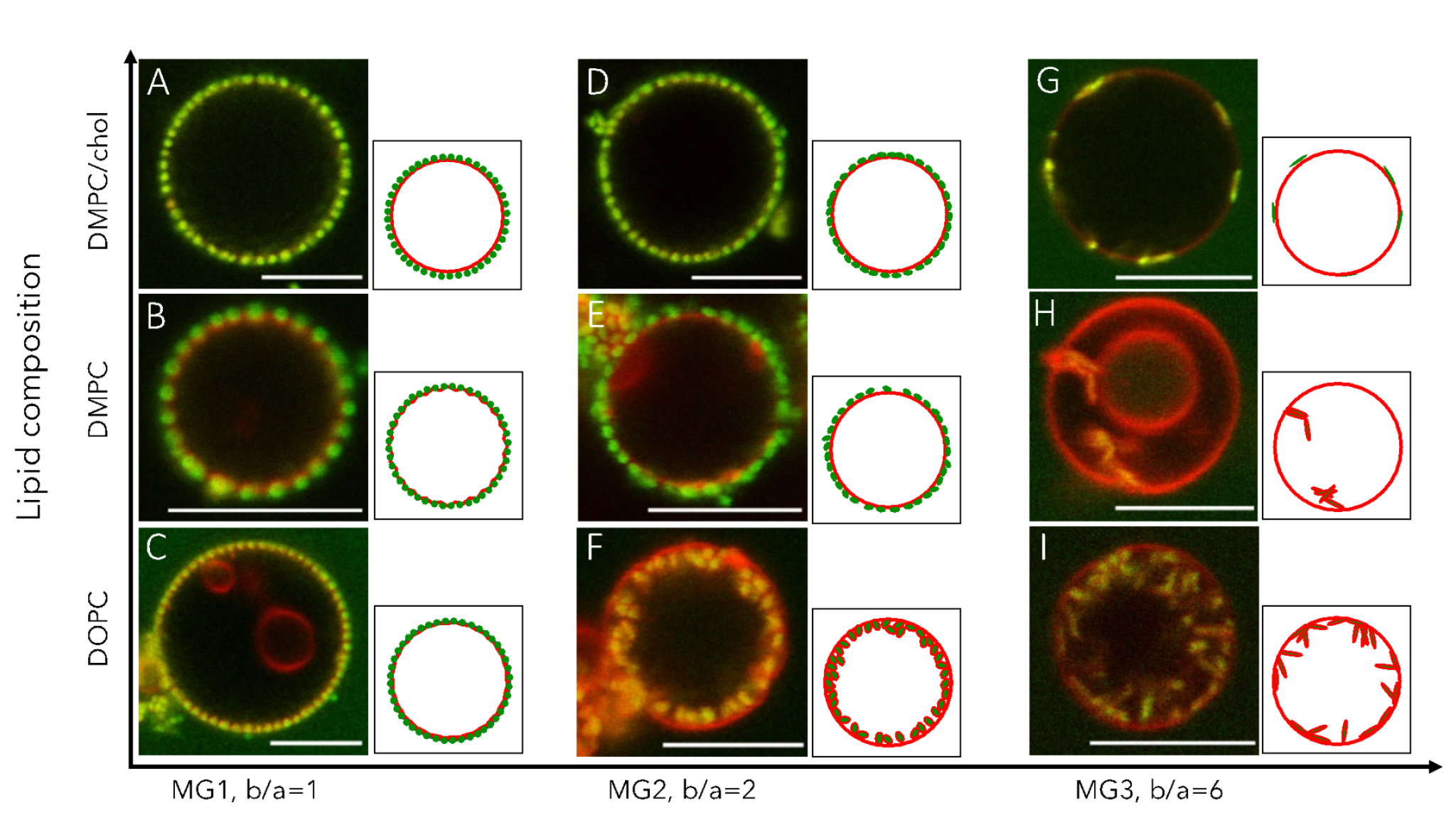
Xiaoyan Liu*, Thorsten Auth*, Nabanita Hazra, Morten Frendø Ebbesen, Jonathan Brewer, Gerhard Gompper, Jérôme J. Crassous, and Emma Sparr. Proc. Natl. Acad. Sci. U.S.A., 2023, 120, e2217534120.
The cellular uptake of colloidal-sized particles of biological or synthetic origin has important implications for cellular function, and for the design of particles for diagnostic and therapeutic applications in nanomedicine. Here, we present experimental data combined with theoretical modeling showing how anisotropic microgels wrap at the lipid membrane depending on the physicochemical properties of the particles and the membrane. Important properties are the bending rigidity of the membrane, the particle shape, and the adhesion energy between the particles and the membrane. Accounting for the possibility offered by microgel systems to be custom-designed, it further opens up opportunities for future fundamental studies, therapeutic applications, and self-assembly strategies which involve nanoparticle–membrane interactions.
We have demonstrated in this study that microgel particles wrapping in lipid membranes can be affected by particle shape and membrane rigidity. The general trend is that deep wrapping of the microgels occurs for the lipid membranes with the lowest bending rigidity, and for the microgels with the largest aspect ratio. 2D colloidal crystals with hexagonal structure is formed at the membranes by the spherical microgels. For the shallow wrapped ellipsoidal MG2 microgel local side to side "smectic-like" ordering was observed at DMPC membrane and they also possess some hexagonal positional ordering at more rigid DMPC/chol membrane. While the ellipsoidal microgels of the highest aspect ratio show random distribution and orientation at DMPC/chol membrane. The microgels strongly prefer to adsorb to the liquid disordered membrane. The calculations predict the same behavior with respect to shallow and deep wrapping as observed in the experimental studies under the conditions when the adhesion strength is slightly higher for the ellipsoidal microgels compared with the spherical ones. We believe that the observations of microgel particle wrapping in the model systems add new understandings to how particle shape and membrane properties engulfment and endocytic processes in living cells and provide new strategies to the future design of novel self-assembling structures on fluid templates by employing nonspherical particles.

Figure 1. 2D CLSM images of adsorption and wrapping of microgel particles (green) on lipid membrane (red) in GUVs.

Figure 2. 3D CLSM images of the adsorbed spherical and ellipsoidal microgels on the GUVs.

Figure 3. Wrapping energies for ellipsoidal particles with DOPC GUV.
First Author: Dr. Liu Xiaoyan, Shaanxi Normal University
Correspondence Authors: Dr. Liu Xiaoyan, Shaanxi Normal University; Dr. Thorsten Auth, Forschungszentrum Jülich, Germany
Full Text Link: https://doi.org/10.1073/pnas.2217534120